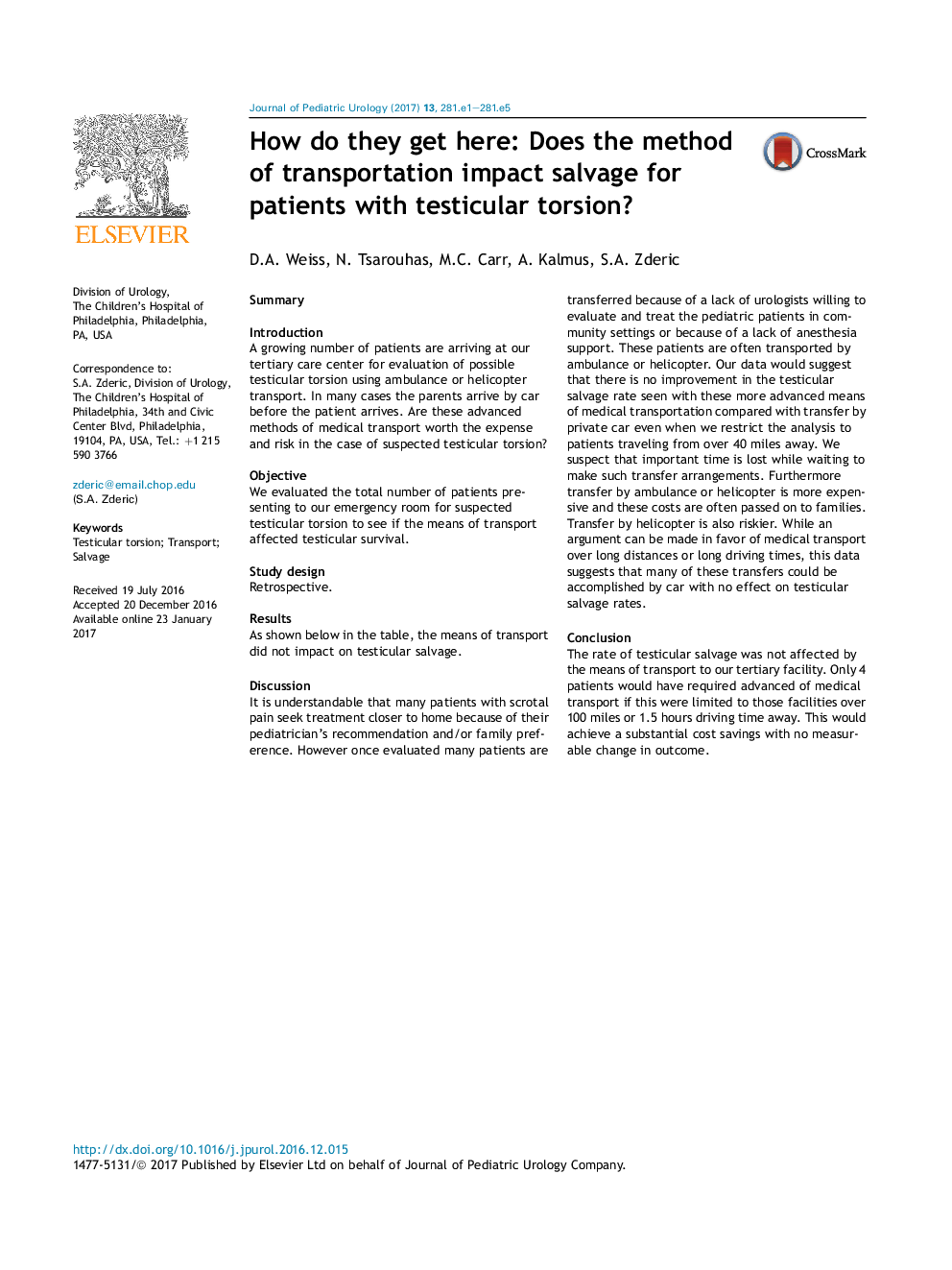| کد مقاله | کد نشریه | سال انتشار | مقاله انگلیسی | نسخه تمام متن |
|---|---|---|---|---|
| 5718599 | 1411254 | 2017 | 5 صفحه PDF | دانلود رایگان |
SummaryIntroductionA growing number of patients are arriving at our tertiary care center for evaluation of possible testicular torsion using ambulance or helicopter transport. In many cases the parents arrive by car before the patient arrives. Are these advanced methods of medical transport worth the expense and risk in the case of suspected testicular torsion?ObjectiveWe evaluated the total number of patients presenting to our emergency room for suspected testicular torsion to see if the means of transport affected testicular survival.Study designRetrospective.ResultsAs shown below in the table, the means of transport did not impact on testicular salvage.NDistance(miles)Driving time(hours)ExploredN (%)SalvageN (%)Salvage>40 milesN (%)Car48415.7 ± 21.50.6 ± 0.3394 (19.4)66 (70)#7/12 (54.5)##Ambulance11129.5 ± 29.2+0.6 ± 0.3837 (33)+23 (62)#9/11 (81.8)##Helicopter3758.4 ± 7.5+*1.04 ± 0.42+*30 (81)+*19 (63)#15/24 (65.2)##+ = P < 0.05 compared to car.* = P < 0.05 compared to ambulance.# = P = 0.6 across all modes of transport.## = P = 0.36 across all modes of transport.DiscussionIt is understandable that many patients with scrotal pain seek treatment closer to home because of their pediatrician's recommendation and/or family preference. However once evaluated many patients are transferred because of a lack of urologists willing to evaluate and treat the pediatric patients in community settings or because of a lack of anesthesia support. These patients are often transported by ambulance or helicopter. Our data would suggest that there is no improvement in the testicular salvage rate seen with these more advanced means of medical transportation compared with transfer by private car even when we restrict the analysis to patients traveling from over 40 miles away. We suspect that important time is lost while waiting to make such transfer arrangements. Furthermore transfer by ambulance or helicopter is more expensive and these costs are often passed on to families. Transfer by helicopter is also riskier. While an argument can be made in favor of medical transport over long distances or long driving times, this data suggests that many of these transfers could be accomplished by car with no effect on testicular salvage rates.ConclusionThe rate of testicular salvage was not affected by the means of transport to our tertiary facility. Only 4 patients would have required advanced of medical transport if this were limited to those facilities over 100 miles or 1.5 hours driving time away. This would achieve a substantial cost savings with no measurable change in outcome.
Journal: Journal of Pediatric Urology - Volume 13, Issue 3, June 2017, Pages 281.e1-281.e5
